Wild swimming - introduction
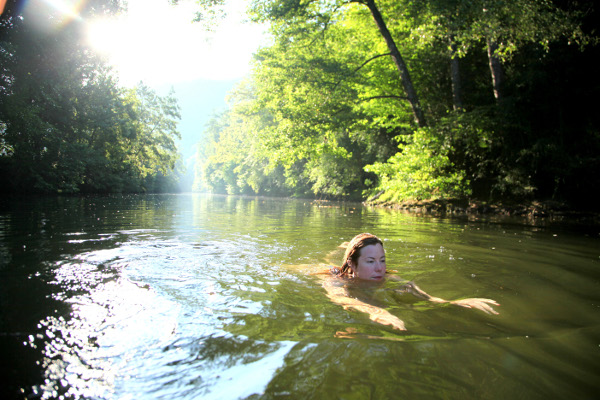
“My preference is swimming in the sea. I find the sea is more liberating, wild and good fun rather than plodding up and down a pool.” – Jo Brand,
Contents
What is wild swimming?
‘Wild’ swimming is the only term that covers what we’re talking about, really. It’s not just ‘swimming’ because that includes indoor swimming pools; it’s not ‘outdoor swimming’ because that includes lidos and outdoor pools; it’s not ‘swimming in rivers and lakes’, because it also includes seas, oceans, lochs, pools, reservoirs, gravel & sand pits, old quarries, estuaries, firths, ponds, streams and anywhere else you can swim in nature – and then the name would be a bit too long. Wild swimming nails it.
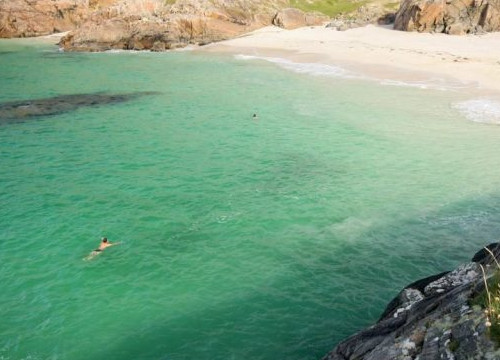
In the early 20th century there were outdoor swimming clubs all over the UK, but they slowly died out as indoor pools were introduced, and our waterways became more polluted. Back then it didn’t seem at all eccentric to swim in nature, as it still doesn’t on the continent, where lakes often turn into lidos in summer.
It was a different story in the UK as the 20th century progressed. Local authorities discouraged it, the Royal Society for the Prevention of Accidents wanted it stopped (but not mountaineering, horse-riding or hang-gliding), the Environment Agency issued an annual warning not to do it, and the Health & Safety Executive insisted on a life-guard on inland swimming spots.
The River and Lake Swimming Association was set up in 2003, and campaigning resulted in RoSPA changing their focus to alcohol and swimming, the EA stopping their annual press releases, and the HSE changing their life-guard policy to waters where swimming is actively encouraged. So the previous levels of discouragement aren’t there any more.
Also, British water bodies are generally less polluted than they were 50 years ago, as manufacturing industries have been exported to the Far East. Whatever that means for the global environment or our economy, it means cleaner rivers, lakes and coastal seas in the UK, which is one of the reasons that wild swimming is taking off again – although agricultural runoff and sewage discharges are a problem, so it’s best to check the state of water bodies before swimming in them.
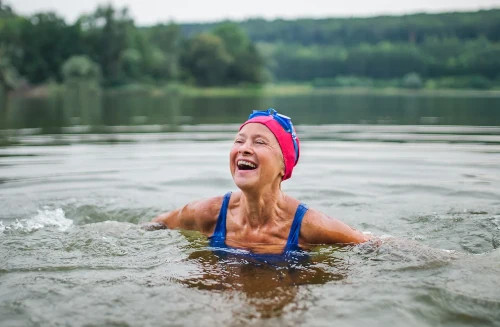
What are the benefits of wild swimming?
- Don’t need a bricks & mortar pool, with all the embodied energy, electricity, heating, chlorine and habitat loss that that entails.
- Get closer to nature – you can easily swim with ducks and fish, and if you’re lucky, with seals, or really lucky, otters; for some reason, wildlife seems less scared and more curious of us when we’re in the water.
- The more people who do it, the more people will want to protect our rivers, lakes and coastline.
- Health & happiness – the exercise will keep you fit, the fresh air healthy, and the exhilaration is a natural antidepressant.
- Pleasure – there’s nothing like swimming in a loch, with the mountains and forests all around reflected in the water, with no noise except bird song and little splashes as you move through the water; read Roger Deakin’s Waterlog for an account of the wonderful experiences you can have swimming wild.
- It’s free – you don’t even need to buy any kit (unless you want to get a wetsuit for cold weather swimming).
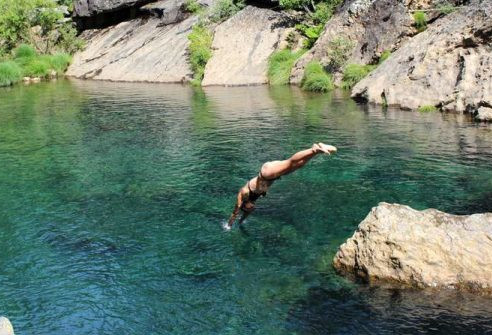
What can I do?
Safety
- Make sure you can swim well first; and if you are going to swim anywhere there might be boat traffic, it’s a good idea to wear a brightly-coloured swimming hat, so that you can be seen.
- Don’t swim in algal blooms, as they can cause allergic reactions, skin rashes etc.
- This may seem obvious, but don’t jump or dive in if you can’t see the bottom; walk gently into the water before swimming off.
- Try to swim with someone else, in case you get into trouble.
- However, there won’t be life guards, and you may not be aware of hazards. Wild swimming is not completely risk-free, just like mountain climbing, canoeing or mountain biking. All you can do is try to understand the risks and not be reckless.
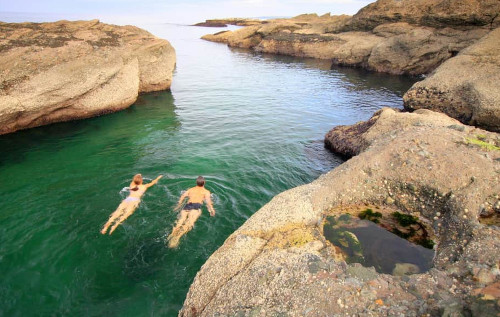
- You may want to get a wet suit, as it keeps you warmer, which means you can stay in the water longer in cold weather, and it’s safer as it makes you more buoyant.
- Weil’s disease is carried by animals, and can be water-borne. In the UK there are around 50-60 cases a year, and 2 or 3 deaths (almost exactly the same as for lightning strikes in the UK). So there’s a risk, but it’s very small.
- The sea can have rip currents that could carry you away – here’s what to do.
- More safety advice.
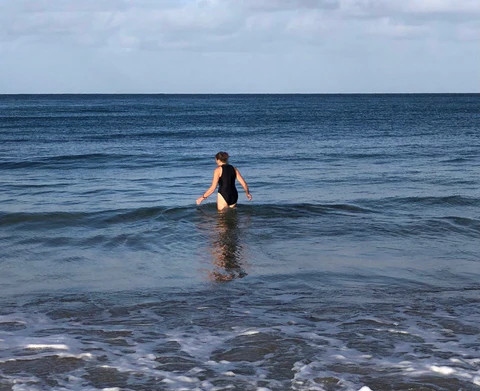
Legalities
In Scotland it’s clear – you can swim anywhere. In England and Wales, it’s much less clear, but it’s certainly not illegal to swim in most open water.
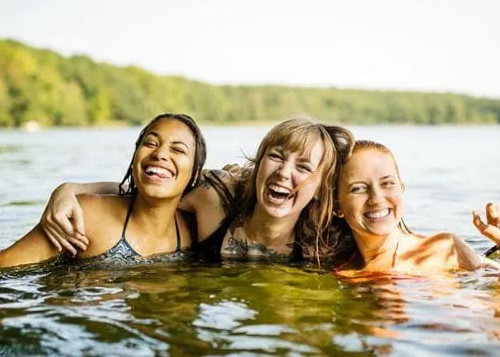
Landowners next to watercourses own some of the bed, and angling clubs own fishing rights – but no-one owns the water, and that’s all you’re touching, apart from getting in and out. So check that there’s public access to your entry and exit points, and you should be OK.
The Canal & River Trust don’t allow swimming in canals or rivers used for navigation. See the River & Lake Swimming Association for more info on legalities.
Practicalities
- Just do it – it’s not cold once you’re in, and when you get out you feel tingly and warm all over.
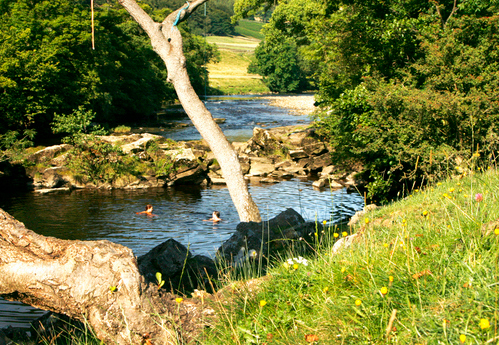
- Most of us have had a dip in the sea in summer, but if you’ve never swum in a lake or river before, it may feel weird at first – there might be mud squelching between your toes, water weeds brushing your legs, a duck floating past; but you’ll get used to it.
- Wetsuits often have a little zip pocket for your car key / valuables, so that you don’t have to worry about your belongings. Don’t try it with an electronic car key though! If you want to keep things dry, there are companies that sell waterproof belts and pouches etc.
Other things you can do
Join the Outdoor Swimming Society or the River & Lake Swimming Association and help campaign for more access for wild swimmers.
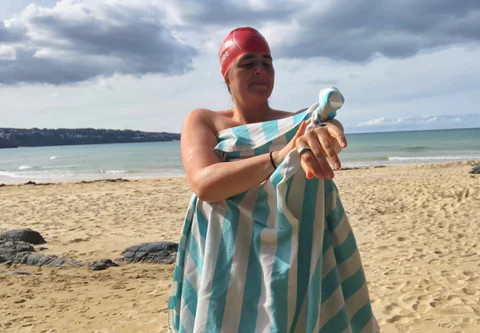
You can help wild swimmers even if you don’t do it yourself, by:
- Reducing your water use. We’ll have to stabilise water use if we’re going to have clean rivers and lakes to swim in. Extraction for agriculture, industry and domestic use is increasing as the economy and population grows. That means not only lower water levels, but also increased concentrations of pollutants.
- Using eco-friendly cleaning products, washing-up and laundry liquids, soaps and especially dishwasher detergents. Non-eco detergents often contain phosphates, which end up in rivers via your drain, and cause algal blooms.
- Not using garden chemicals either, as they will be washed into groundwater and eventually into watercourses.
Further resources
- Beginners’ guide to wild swimming
- Outdoor Swimming Society – free-to-join organisation set up to promote outdoor swimming
- River & Lake Swimming Association – the first national organisation set up to safeguard the interests of open water swimmers
Specialist(s)
Thanks to Daniel Start of wildswimming.co.uk for information.
The specialist(s) below will respond to queries on this topic. Please comment in the box at the bottom of the page.

Daniel Start runs wildswimming.co.uk. He’s a travel writer, photographer and environmental consultant, and author of Wild Swimming Coast, Wild Swimming France, Wild Guide South West and winner of the Writers’ Guild Award for Non-Fiction. He lives at the confluence of two rivers in rural Somerset and is married, with a baby daughter.


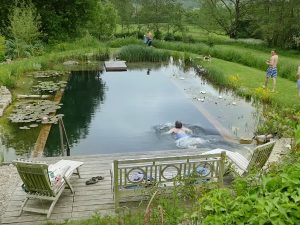
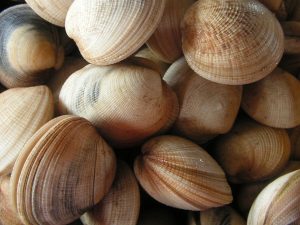
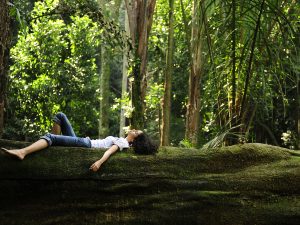
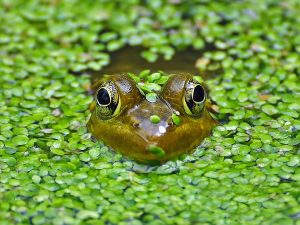
3 Comments
Wow!! This is realy great. Swimming in a mountain lake. I do know that water is cold.
Fantastic. I live by the sea but I am a very poor swimmer. I have my first swimming lesson next Thursday in the sea. I hate swimming pools with all the chemicals and people. I have booked onto a freediving course next year. Maybe you could do and article on freediving. Another subject might be spearfishing. Spearfishing is a very ethical way of feeding yourself. You stalk and take just the fish you want for a meal. There is no by catch, no waste and no traumatizing fish only to put them back because they are the wrong size or species. You only take what you need.
I highly recommend one of Daniel’s others books called ‘Wild Swimming France’. We went on a driving holiday last year in France and used it to plan stop-overs to break up the long distances. As well as the actual places listed in the book it also makes you really aware of the various rivers and water spots around the country.